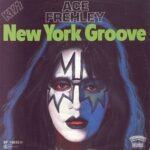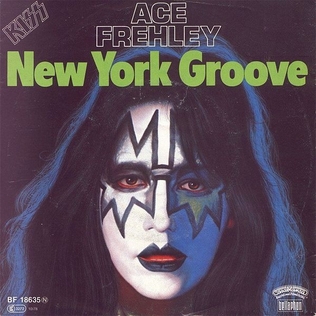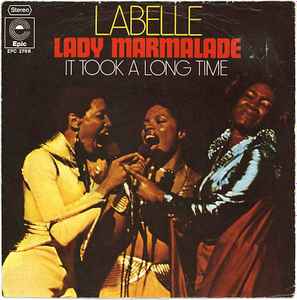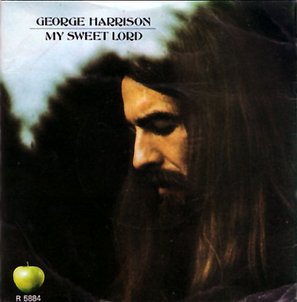 Ace Frehley’s “New York Groove” is one of those rare tracks that perfectly captures the essence of a place, a persona, and a moment in rock history, all while remaining irresistibly catchy decades after its initial release. Originally written by Russ Ballard and first recorded by Hello in 1975, Frehley’s 1978 version, featured on his self-titled solo album, elevated the song into a bona fide rock anthem, cementing his identity both as the lead guitarist of Kiss and as a solo artist in his own right. “New York Groove” combines infectious hooks, driving guitar work, and the unmistakable swagger of a musician fully in command of his craft. From the opening riff to the closing notes, the track radiates energy, pride, and excitement, becoming both a celebration of New York City and a timeless representation of Frehley’s unique musical style. Its enduring popularity, frequent radio play, and inclusion in films, commercials, and cultural references underscore its significance as a rock classic that resonates far beyond its original era.
Ace Frehley’s “New York Groove” is one of those rare tracks that perfectly captures the essence of a place, a persona, and a moment in rock history, all while remaining irresistibly catchy decades after its initial release. Originally written by Russ Ballard and first recorded by Hello in 1975, Frehley’s 1978 version, featured on his self-titled solo album, elevated the song into a bona fide rock anthem, cementing his identity both as the lead guitarist of Kiss and as a solo artist in his own right. “New York Groove” combines infectious hooks, driving guitar work, and the unmistakable swagger of a musician fully in command of his craft. From the opening riff to the closing notes, the track radiates energy, pride, and excitement, becoming both a celebration of New York City and a timeless representation of Frehley’s unique musical style. Its enduring popularity, frequent radio play, and inclusion in films, commercials, and cultural references underscore its significance as a rock classic that resonates far beyond its original era.
The opening of “New York Groove” immediately sets the tone for the song’s urban energy. The guitar riff, delivered with Frehley’s characteristic punch and clarity, establishes a driving rhythm that is both danceable and assertive. Unlike many rock tracks that rely solely on power chords or intricate solos, this riff balances simplicity with memorability, creating an aural hook that captures the listener’s attention from the very first note. The riff is complemented by a tight rhythm section—bass and drums interlock to create a groove that is both forward-moving and grounded, allowing the listener to feel the heartbeat of the city through the music. This combination of immediacy and groove is central to the song’s success, demonstrating Frehley’s skill at blending technical precision with unpretentious, irresistible rock energy.
Ace Frehley’s vocal performance on “New York Groove” is a study in confident cool. Unlike many of his contemporaries who favored dramatic theatrics or overblown delivery, Frehley approaches the song with a laid-back swagger that feels authentic and engaging. His voice carries both grit and clarity, capturing the excitement and pride inherent in the song’s lyrics. There is a conversational quality to his phrasing, as if he is personally guiding the listener through the streets and experiences of New York City, inviting them to share in his urban adventure. This vocal style enhances the narrative element of the track, giving it a sense of immediacy and connection that goes beyond mere performance. Frehley’s restrained yet expressive delivery ensures that the song’s energy is maintained without ever feeling forced or artificial.
Lyrically, “New York Groove” functions as both an anthem and a personal declaration. The song’s narrative is straightforward yet evocative, celebrating the unique energy, diversity, and vibrancy of New York City. Lines such as “I’m back, back in the New York groove” convey a sense of homecoming, excitement, and confidence, emphasizing the city as a place of possibility and personal identity. The lyrics are intentionally broad, allowing listeners to project their own experiences and memories onto the song, while Frehley’s delivery imbues them with personality and authenticity. The balance of simplicity and evocative imagery ensures that the track functions both as a rock anthem and a celebration of place, giving it resonance with audiences who may have never even visited New York.
The instrumentation throughout “New York Groove” is meticulously crafted to emphasize energy, clarity, and accessibility. Frehley’s guitar work dominates the arrangement, providing both rhythmic drive and melodic interest. The guitar tone is bright, punchy, and slightly overdriven, giving it the perfect blend of edge and warmth. Solos and fills are strategically placed, accentuating key moments without overwhelming the overall groove. The bass line is solid and supportive, locking in with the drums to create a driving pulse that propels the song forward. The drum performance is precise and energetic, maintaining momentum while adding subtle variations that keep the rhythm engaging. Together, these elements create a sonic landscape that is polished yet raw, structured yet spontaneous, reflecting the duality of the city itself—gritty yet glamorous, chaotic yet vibrant.
The song’s structure exemplifies the hallmarks of effective rock songwriting. The opening riff sets the stage, followed by verses that establish the narrative and build momentum. The pre-chorus creates anticipation, leading to a chorus that explodes with both melodic and emotional release. Each section flows naturally into the next, maintaining tension and engagement throughout the track. The call-and-response between the vocal line and guitar fills adds dynamism, creating interplay that is as satisfying for the listener as it is for the performer. This careful attention to structure ensures that the song is both memorable and engaging, capable of standing alongside other classic rock anthems of its era.
One of the song’s most remarkable features is its ability to evoke a strong sense of place. Through the combination of lyrical content, vocal delivery, and musical energy, “New York Groove” transports the listener to the streets of Manhattan, Brooklyn, or Queens. The urban imagery is subtle yet effective: the sense of movement, urgency, and excitement is mirrored in the rhythm and phrasing of the song. Frehley’s performance embodies the confidence, independence, and vitality associated with New York City, making the track a musical postcard that celebrates both the city and the spirit of rock ‘n’ roll.
“New York Groove” also represents a significant moment in Ace Frehley’s solo career. Released during a period when all four members of Kiss were pursuing individual projects, the song allowed Frehley to step out from the shadow of his band’s collective identity and establish his own artistic voice. The track showcases his strengths not only as a guitarist but also as a songwriter and vocalist capable of delivering a cohesive, compelling performance. It highlights his ability to balance technical skill with accessible, hook-driven songwriting, creating a track that is both commercially successful and musically satisfying. The success of “New York Groove” affirmed Frehley’s solo potential, demonstrating that his talents extended far beyond his contributions to Kiss.
The cultural impact of “New York Groove” has been far-reaching. It has become a staple on classic rock radio, appeared in films and television shows, and been used to evoke the energy of New York City in various media contexts. The song’s infectious energy and urban imagery make it an ideal soundtrack for scenes requiring vitality, confidence, and excitement. Its enduring popularity is a testament to both the quality of the songwriting and the strength of Frehley’s performance, proving that a well-crafted rock song can maintain relevance across decades and cultural shifts.
The chorus of “New York Groove” is a masterclass in rock hook writing. The repetition of the phrase “Back in the New York groove” is simple yet immensely satisfying, creating a sense of release and affirmation that resonates with listeners. Frehley’s vocal inflection and timing transform this repeated line into a rallying cry, while the underlying instrumentation supports and amplifies the melodic content. The combination of repetition, melodic contour, and rhythmic precision ensures that the chorus is both immediately recognizable and enduringly memorable, cementing the song’s status as an anthem.
Another defining aspect of “New York Groove” is its interplay between simplicity and sophistication. On the surface, the song is approachable, with straightforward lyrics, a catchy riff, and an accessible structure. Beneath this surface, however, the performance is full of nuance: subtle dynamic shifts, carefully timed guitar accents, and vocal phrasing that adds depth and personality. This layering allows the song to function on multiple levels, providing immediate enjoyment for casual listeners while rewarding closer attention from fans and musicians who appreciate the technical craftsmanship. Frehley’s ability to balance these elements contributes to the song’s longevity and broad appeal.
The guitar solo in “New York Groove” deserves particular attention. While not overly elaborate, it is perfectly constructed to enhance the song’s energy and narrative momentum. Frehley’s phrasing is melodic and expressive, providing contrast to the driving riff while reinforcing the track’s overall intensity. The solo demonstrates his skill at creating musical tension and release, using bends, slides, and tonal variation to create a sense of movement and excitement. This approach reflects his understanding of rock guitar as both a melodic and rhythmic instrument, capable of advancing the song’s narrative as well as its technical display.
Production quality also contributes to the song’s lasting appeal. Frehley’s solo album, produced in collaboration with Eddie Kramer, ensures that each instrument is clear, present, and balanced. The mix highlights the interplay between guitar, bass, and drums, allowing the groove to remain at the forefront while providing space for Frehley’s vocals and solos to shine. Kramer’s expertise in capturing the energy of rock performance ensures that “New York Groove” maintains a sense of immediacy and vitality, even decades after its original recording.
Live performances of “New York Groove” further solidify its reputation as an enduring rock anthem. Frehley’s stage presence, coupled with his charismatic guitar work and confident vocals, brings the track to life, energizing audiences and emphasizing the song’s celebratory nature. The live arrangements often allow for subtle improvisation, extended solos, or audience interaction, highlighting the track’s flexibility and the performer’s mastery. These performances demonstrate that the song is not only a studio creation but also a living, evolving piece of rock history, capable of captivating audiences in any setting.
“New York Groove” also represents the intersection of personal identity and place. The song’s lyrics and energy convey not only Frehley’s connection to New York City but also his broader persona as a rock star—confident, independent, and larger-than-life. The track functions as both a celebration of urban culture and a declaration of artistic identity, blending autobiography with universal appeal. Listeners are invited to share in the excitement, pride, and vibrancy of the city through Frehley’s perspective, creating a sense of connection and shared experience that transcends time and geography.
The song’s legacy is reinforced by its continued relevance in popular culture. From sports arenas to films and television, “New York Groove” is used to evoke energy, celebration, and the spirit of New York itself. Its broad appeal and adaptability are a testament to Frehley’s songwriting and performance, highlighting the song’s ability to resonate across different media and audiences. It remains a favorite among classic rock enthusiasts, newcomers discovering Frehley’s solo work, and anyone seeking a soundtrack that captures the excitement of city life and the power of rock ‘n’ roll.
In conclusion, Ace Frehley’s “New York Groove” is more than a catchy rock song; it is an enduring anthem that celebrates the energy, excitement, and identity of both a city and a musician. Its driving riff, infectious rhythm, and confident vocal delivery create a track that is immediately engaging while offering depth and nuance for those who listen closely. The song’s structure, instrumentation, and production reflect Frehley’s mastery of his craft, combining technical skill with accessible songwriting to create a track that resonates across decades. Its cultural impact, continued popularity, and use in media underscore its significance as a rock classic. “New York Groove” captures the essence of New York City, the spirit of Ace Frehley, and the timeless power of rock music, ensuring its place in musical history as a song that continues to inspire, energize, and captivate listeners around the world.



